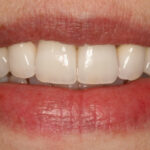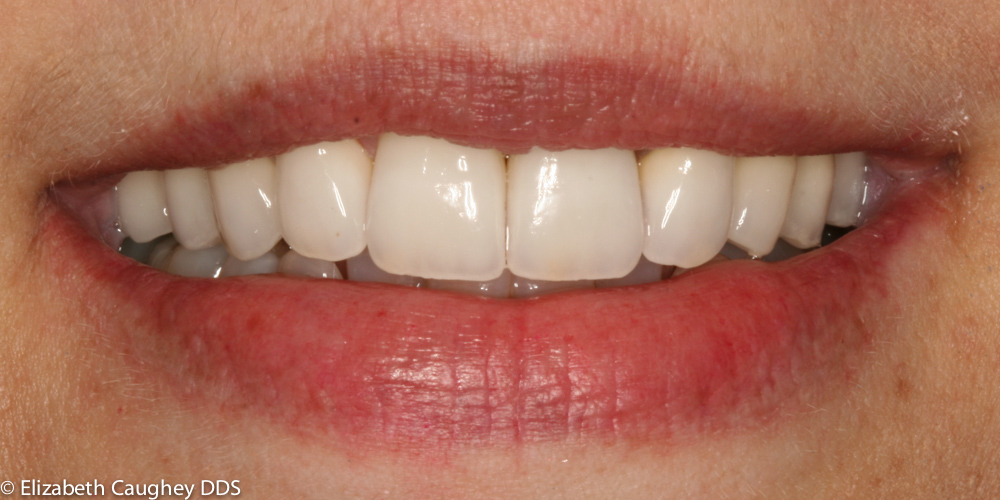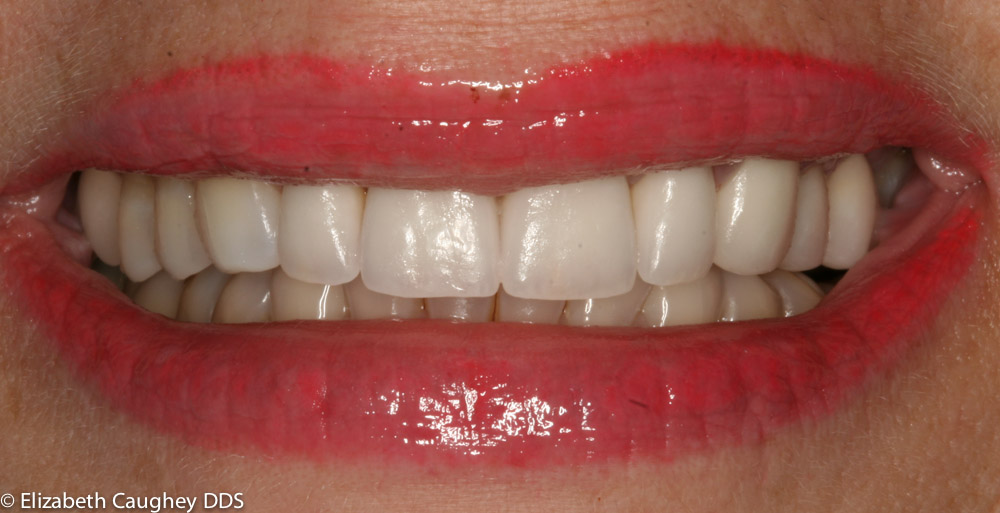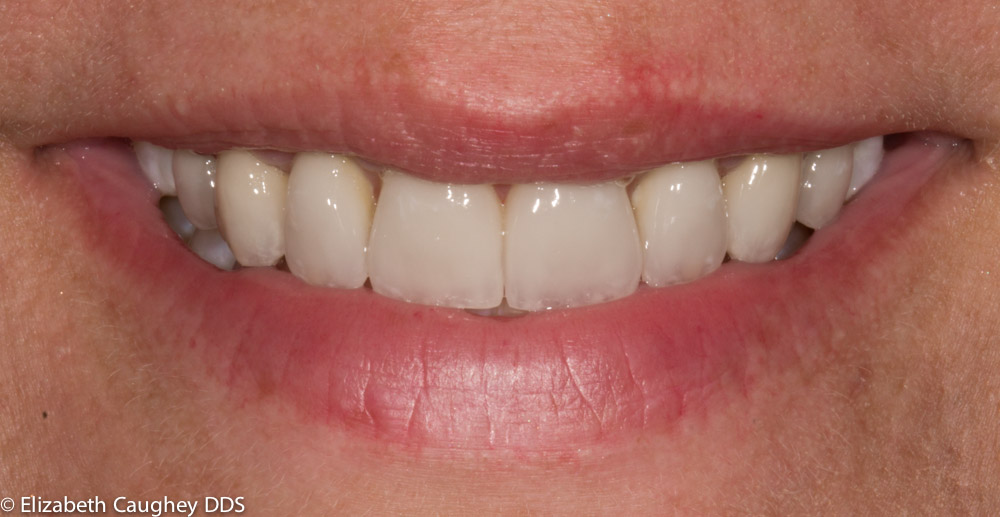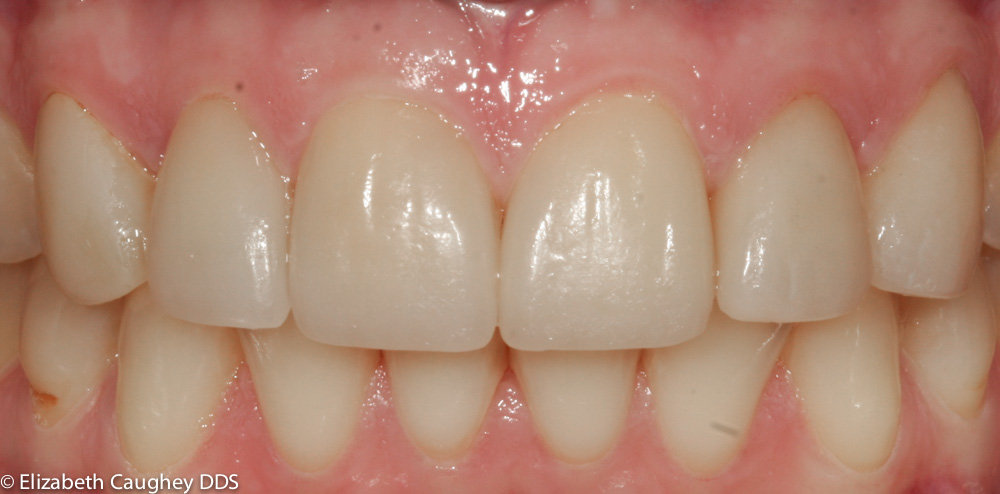Bite splint therapy and all-ceramic crowns to solve sinus pain misdiagnosis
This patient had been treated by several dentists and doctors for ongoing pain in the left cheek area, and was ultimately referred for a second opinion. The relevant history starts with cosmetic dentistry she had done to camouflage congenitally-missing lateral incisors. Her sense of her new porcelain veneers was appreciation for the improvement over missing teeth, but that overall the teeth were oversized and too long – she described a feeling of banging the front teeth on incidental contact, and of “tripping” over her front teeth with her lower lip, so much so that it occasionally felt numb.
Along the way, this patient had left cheekbone pain, and was referred to an ENT for maxillary sinus infections. She was prescribed several rounds of broad spectrum antibiotics, for an infection she didn’t feel she truly had – she had not experienced any congestion or nasal drip, and did not feel stopped up. Her only complaint was pain. Thus she was referred back to her dentist, who determined she must have a tooth infection. A root canal for an upper molar was performed, then the tooth next to it, and the tooth beside that, and so on until the pain in this quadrant of her mouth and cheek led her to ultimately have a tooth extracted. And yet, the pain persisted. She was referred back to the ENT, who recommended and performed sinus surgery. She was also told she had allergies, though she did not feel itchy or sneezy. By the time we met, she was on 2 different nasal steroids, an anti-histamine, had 5 root canals, one dental extraction, and the pain in the left cheek continued.
My initial assessment revealed the pain was most likely initiating from the left masseter (powerful jaw closing muscle) and referring to the tooth closest to it. An occlusal analysis revealed the patient had great difficulty sliding her teeth around inside her jaw, and that she had a trembling of the jaw that occurred as she slid her teeth into protrusive – the posture a person uses to bite forward into a sandwich.
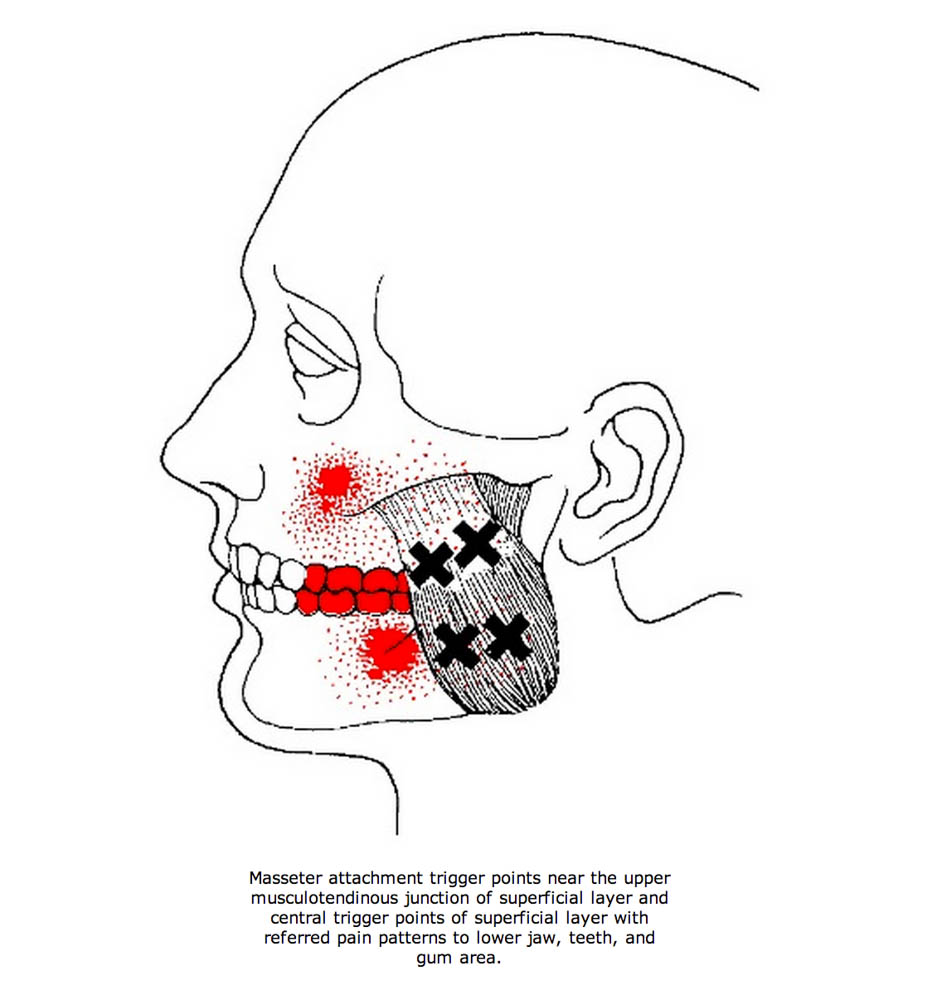
Travell-Simons pain referral pattern for masseters to molars.
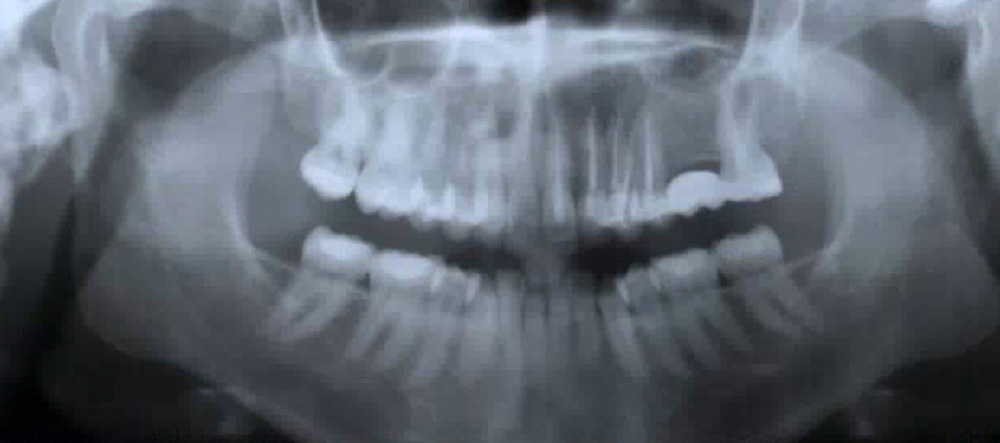
Using gray wax on a model of the patient’s teeth, we shortened the length of the upper front porcelain veneers. The patient appreciated the improved balance aesthetically in the width-length ratio, so we initiated equilibration therapy by reshaping her existing veneers with the knowledge that we would ultimately replace them with ones that were more functional for her.
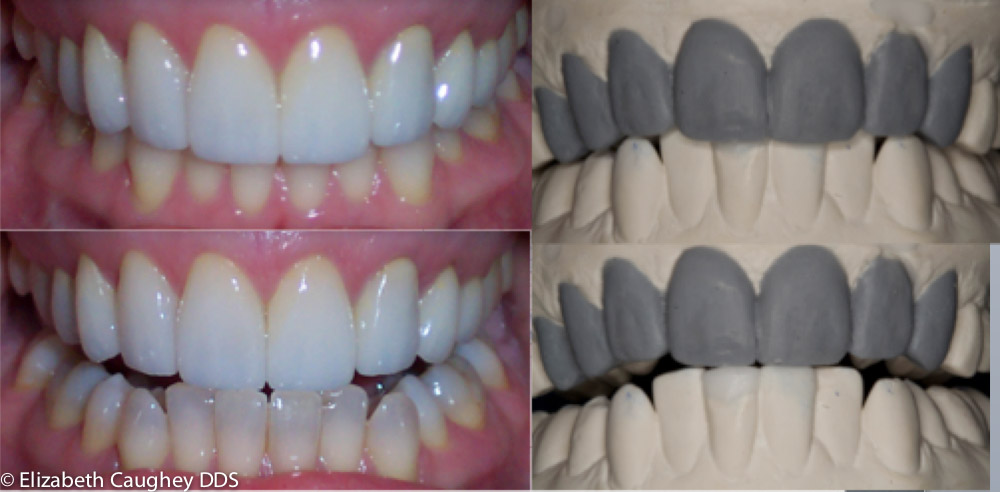
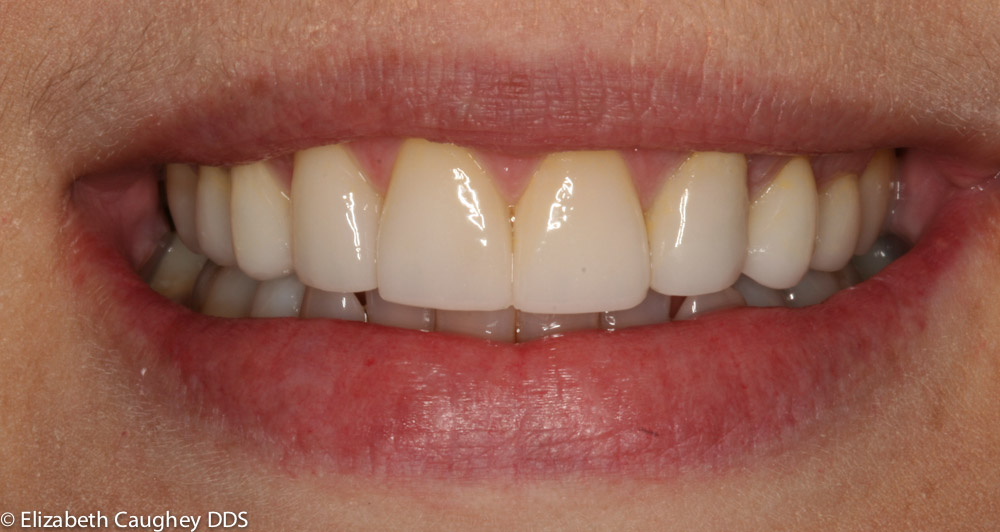
After replacing veneers with all-ceramic crowns.
The equilibration achieved dramatic improvement in the patient’s jaw and left cheek pain. She was ultimately able to come off all the medication she was prescribed, and none of the symptoms returned.
For more cases like this, see our FlickR page at https://www.flickr.com/photos/drcaughey/sets/

